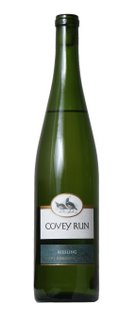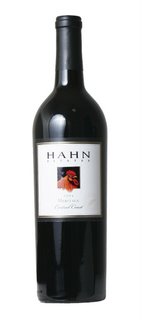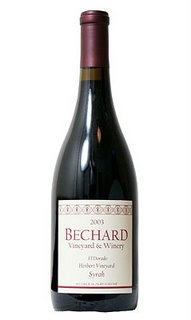Rich Idiot Cool Kids
I'm pissed. I'm pissed that I'm out 100 bones and got nothing good in return. I'm pissed that there's really no one to take my pissedness out on. And that makes me even more pissed.
OK. Deep breaths. Relax. Find your happy place. Start from the beginning.
Last week I decided to celebrate signing a six-figure contract with the Chico Beat to write this wine column (it's true that at the time I didn't realize that all six figures were zeros - but my eyes aren't good enough to read that itty bitty fine print). As a wine snob, the only proper way to celebrate was to go to a fine restaurant, buy an incredibly expensive bottle wine, and have it with a great meal.
So that's what I did. I went to one of Chico's finer eating establishments (which will remain nameless to avoid implying guilt by association), took a long thoughtful perusal of the extensive wine list, and ordered a bottle of 1999 Dominus Napa Valley Cabernet Sauvignon. Should have been a slam-dunk. 1999 was a great year for Napa Valley, and Dominus is one of the top names in cult California cabernets (“cult” meaning “insanely expensive status symbol wine”). I shelled out $108 for the privilege of tasting what was supposed to be one of the premier wines of the Golden State.
And what did I get? Right off the bat the wine was unimpressive. For $100 you expect a top of the line Napa cab to knock you down with rich aromas of complex fruit and earth. Chocolate, cassis (whatever the heck that is), black currant (never had that either), leather (yum), tobacco (even yummier) and spice. Doesn't sound too appealing, but it's supposed to be. In any case, this wine barely even smelled like wine, much less any of those other things.
Even after letting it breathe for over an hour (breathing - exposing the wine to air - is supposed to allow the wine to develop and become more flavorful after 7 years cooped up in a bottle), there was really nothing much to it.
Great red wines, like cabernet sauvignons, are supposed to have a balance of fruit- and earth-like flavors, followed by a smooth dry finish of developed tannins (tannins are a dry, potentially mouth-puckering component of the grape skins). This wine had no fruit to speak of and the tannins, far from being smooth, were bitter and acidic. Blech!
In all truthfulness, I’ve had $20 bottles of wine that blew this overpriced, over-hyped bottle of bilge out of the water. And that’s why I’m pissed. I’m pissed because there is no direct correlation between the price of a bottle and the quality of the wine in the bottle. A $100 bottle of wine is not automatically better than a $20 bottle – and certainly not five times better.
I’d like to blame the restaurant, but it’s totally not their fault. They didn’t suggest the wine; I ordered it of my own free will. And besides, the food was fantastic (mmm…curried lamb!). No, it’s the fault of idiots with tons of money, no taste in wine, and an overwhelming desire to be one of the “cool kids” who buy only the most exclusive grape juice spiked with alcohol. OK, maybe it’s my fault for falling into the thinking that a $100 bottle of wine must be mind-blowing. Instead, it was barely drinkable.
So let my misfortune be a lesson to you. An expensive wine is not necessarily a good wine. And a cheap wine is not necessarily a bad wine. There are a virtually endless number of great wines out there for under $20. Of course, there’s plenty of swill out there for under $20 as well. How do you tell the difference? Unfortunately, there’s no magic shortcut. I can help point you to a few good wines, but you have to try them yourself and see if you like them. I guarantee you’ll kiss your fair share of toads in the process, but hopefully you’ll find some princes as well.
Wine Words
Cabernet sauvignon (cab-air-NAY so-veen-YON). The "king" of the red wine grapes. Capable of making the deepest, most profound, most expensive red wines. Best areas for cabernet include the Bordeaux region in France and the Napa Valley in California.
Chardonnay (shar-doh-NAY). What cabernet is for red wine, chardonnay is for white - easily the most popular grape on the market. White wines from Burgundy (including Chabis) are made from chardonnay grapes, as is most champagne.
Frizzante (free-ZAHN-tay). An Italian word for wines with a slight effervescence, but nothing like what a truely sparkling wine would have. Sometimes disappears a few minutes after opening the bottle.
Tannin. Tannins are a naturally occurring astringent component of grape skins, and can give a very dry, mouth-puckering taste to red wines. Tannins naturally mellow over time, giving wines a sliky smoothness (the main reason red wines improve as they get older). White wines, because the juice is not left in contact with the grape skins, do not have tannins and generally do not age like red wines.
2004 Covey Run Riesling
Finally, I'm coming through with a wine of the week for under $10. It took a bit of looking. I had to drink my way through a fair amount of cheap wine before I found something I really liked. The 2004 Covey Run Riesling, from Washington state, made the grade.
Riesling, as I discussed in the last column, is a white German grape that can make wines in a variety of styles, from dry to incredibly sweet. This is a slightly sweet riesling, with a light milky smoothness. It has a mild nose, with a touch of sour apple. Not very acid. That along with the sweetness makes this a very easy to drink wine. This wine also has a touch of frizzante (fizz) that is quite nice. If you haven't experienced frizzante before, this is worth trying just for the cheap thrill. If you like big, complex, dry wines, you probably won't like this, but for the price, this is a surprizingly good effort. Actually quite nice with Indian food. Available at Cost Plus World Market for $6.99.





